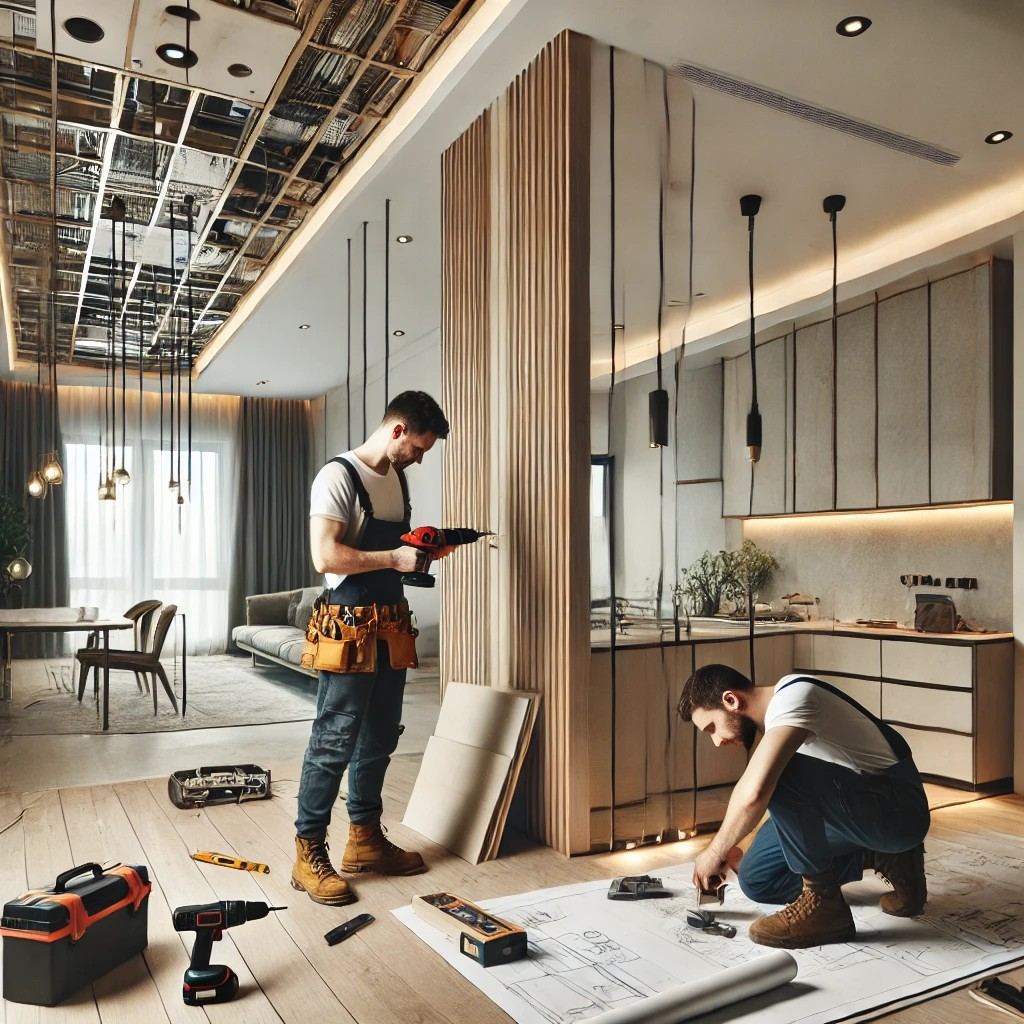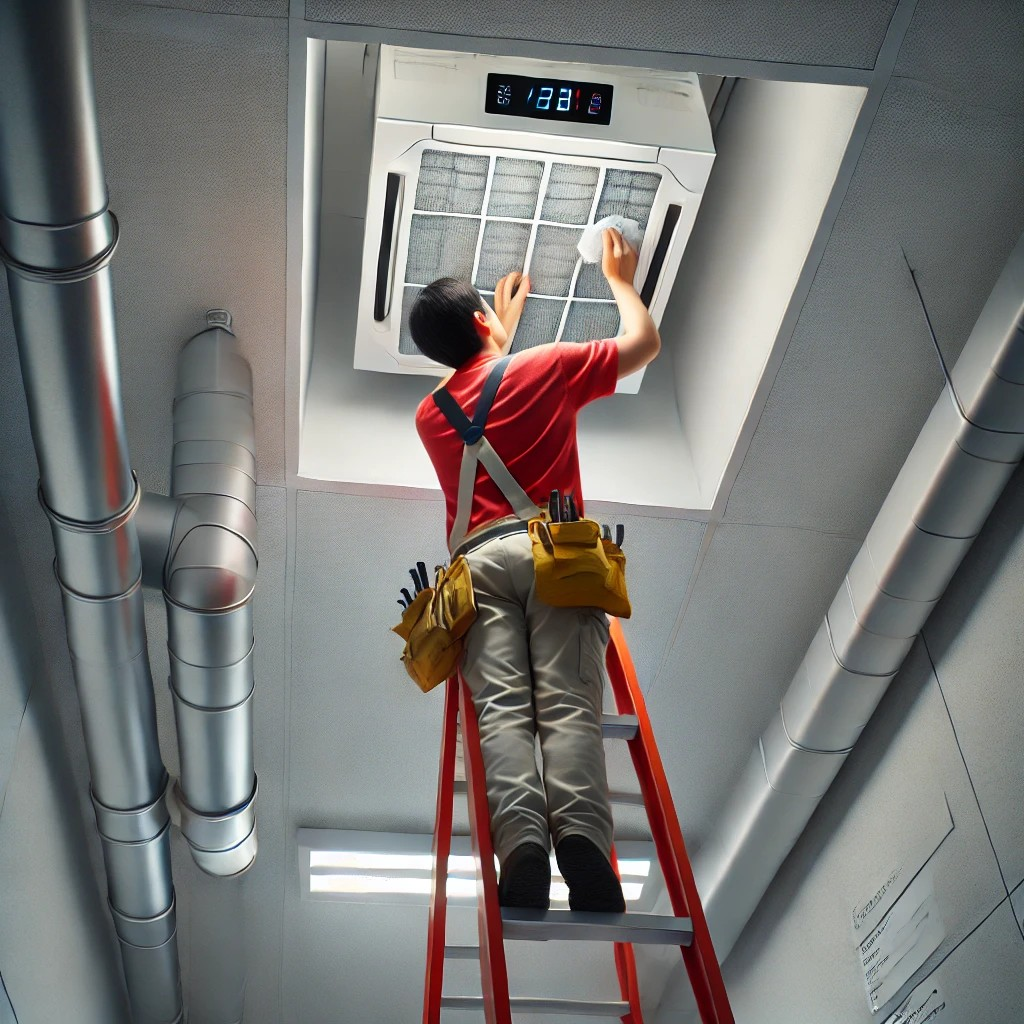Renovation, Repairs and Maintenance
Our Renovation, Repairs, and Maintenance services for interior finishes and MEP (Mechanical, Electrical, and Plumbing) systems cater to apartments, villas, and buildings with a focus on quality and efficiency. We handle everything from upgrading and restoring interior spaces to ensuring the optimal performance of critical MEP systems. Our team specializes in modernizing interiors with high-quality materials, while also conducting thorough inspections, repairs, and preventive maintenance for HVAC, electrical, and plumbing systems. We prioritize minimizing disruption to occupants while delivering durable, aesthetically pleasing results that enhance the value and functionality of the property.
Architecture Renovation and Maintenance
Mechanical engineering design services involve creating, analyzing, and optimizing mechanical systems and products.
These services include conceptual design, detailed engineering, and prototyping for machinery, equipment, HVAC systems, and structural components.
By leveraging CAD (Computer-Aided Design) tools, engineers create 3D models, run simulations, and perform stress analysis to ensure optimal performance, safety, and cost-efficiency.
Typical projects range from designing components for manufacturing to large-scale systems like energy plants. With a focus on precision and innovation, these services help transform ideas into functional products while meeting regulatory standards and client requirements across various industries, including construction, automotive, and aerospace.
Interior Design Renovation and Maintenance
Electrical engineering design services involve creating and planning electrical systems for residential, commercial, and industrial projects.
This includes designing power distribution, lighting, fire alarms, and communication systems to ensure safety, efficiency, and compliance with local codes and standards.
Engineers develop detailed schematics, load calculations, panel schedules, and system layouts. They also incorporate energy-saving technologies and automation. The design process includes coordination with architects, mechanical engineers, and construction teams.
From initial concept through to construction documentation, electrical engineering design ensures that power systems are reliable, meet client needs, and integrate seamlessly with other building elements.
Mech-Elec-Plumbing Renovation and Maintenance
Public Health Engineering (PHE) design services focus on creating efficient systems for water supply, drainage, sanitation, and waste management in buildings. This includes designing potable water distribution, sewage systems, rainwater harvesting, and sustainable waste disposal strategies.
PHE services also cover fire protection, stormwater management, and graywater recycling to ensure buildings meet hygiene and environmental standards.
The designs prioritize health, safety, and regulatory compliance, integrating smart technologies and automation for efficiency.
Public Health Engineers work closely with architects and other engineers to deliver systems that enhance well-being while minimizing environmental impact and conserving resources.
Renewable Energy Renovation and Maintenance
Structural engineering design services involve the analysis and design of structures that can safely withstand loads and forces. These services ensure that buildings, bridges, and other structures are stable, durable, and compliant with building codes.
Structural engineers assess factors like material strength, load distribution, and environmental impact to create efficient designs. They work on everything from foundations to frameworks, integrating safety with functionality.
Using advanced software and simulations, they predict structural performance under various conditions, optimizing designs for cost-effectiveness and longevity.
Structural engineering design services are essential for creating safe and resilient built environments, whether for residential, commercial, or industrial projects.
Renovation, Repairs and Maintenance Services
Case Study: The Impact of MEP Maintenance on Building Energy Efficiency, Operation, and Interior Environment Quality
Project Overview
This case study explores the benefits of regular maintenance of Mechanical, Electrical, and Plumbing (MEP) systems in a mid-sized commercial building. The focus is on how consistent MEP maintenance improves energy efficiency, operational reliability, and the quality of the interior environment, leading to significant cost savings and enhanced occupant comfort.
Objectives
The primary objectives of this case study were to:
1. Increase Energy Efficiency: Identify how regular MEP maintenance can reduce energy consumption and improve system performance.
2. Enhance Operational Reliability: Examine the impact of maintenance on reducing system downtime and extending equipment lifespan.
3. Improve Interior Environment Quality: Assess how well-maintained MEP systems contribute to indoor air quality, thermal comfort, and overall occupant well-being.
Methodology
The building in question, a five-story commercial office space, underwent a comprehensive MEP maintenance program over a one-year period. The maintenance included:
- HVAC System: Regular filter changes, coil cleaning, and inspections of ductwork and ventilation systems.
- Electrical System: Testing and calibrating electrical components, inspecting wiring, and maintaining lighting systems.
- Plumbing System: Regular inspection of water pipes, pumps, and drainage systems, along with leak detection and water quality assessments.
Data on energy consumption, operational incidents, and occupant feedback were collected before and after the implementation of the maintenance program to measure its impact.
Results
1. Energy Efficiency Improvements:
- Reduction in Energy Consumption: After one year of regular MEP maintenance, the building's energy consumption decreased by 15%. This was primarily due to the increased efficiency of the HVAC system, where cleaned and well-maintained components such as coils and filters allowed for smoother airflow and more efficient heating and cooling.
- Optimized System Performance: The maintenance program ensured that all MEP systems operated at peak efficiency, reducing the overall energy load and preventing unnecessary energy use.
2. Operational Reliability:
- Decreased System Downtime: The frequency of unexpected breakdowns and repairs dropped by 30%, thanks to proactive maintenance. This reduced the need for costly emergency repairs and minimized disruptions to building operations.
- Extended Equipment Lifespan: Regular maintenance helped to extend the lifespan of critical MEP components, such as HVAC compressors and electrical panels, delaying the need for expensive replacements.
3. Improved Interior Environment Quality:
- Enhanced Indoor Air Quality (IAQ): The regular replacement of HVAC filters and cleaning of ductwork significantly improved indoor air quality, reducing the concentration of dust, allergens, and pollutants. Occupant feedback indicated a noticeable improvement in air freshness and reduced respiratory issues.
- Better Thermal Comfort: Consistent HVAC maintenance ensured that the building’s temperature was more evenly regulated, improving thermal comfort for occupants and reducing complaints related to temperature fluctuations.
- Lighting Quality: Regular maintenance of lighting systems, including cleaning fixtures and replacing bulbs, improved the overall lighting quality in the building, contributing to a more pleasant and productive work environment.
Conclusion
The case study clearly demonstrates that regular MEP maintenance offers substantial benefits in terms of energy efficiency, operational reliability, and the quality of the interior environment. By reducing energy consumption, preventing system failures, and improving indoor air and thermal comfort, the building not only achieved cost savings but also enhanced occupant satisfaction and productivity.
The findings highlight the importance of incorporating a proactive MEP maintenance strategy as part of a building’s overall management plan, particularly in commercial settings where energy use, operational continuity, and occupant comfort are critical to success.





